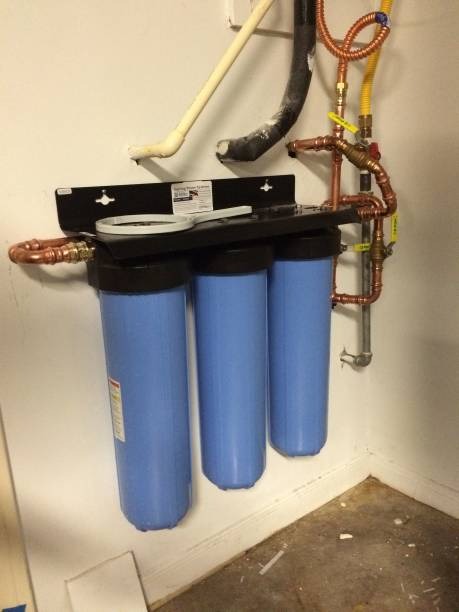Water Conditioner Installation in Tempe, AZ
Hard water is common across the Valley, and Tempe homes routinely deal with mineral buildup that shortens appliance life, reduces plumbing efficiency, and leaves spots on fixtures and landscape irrigation lines. A salt-free water conditioner installation in Tempe, AZ is a practical alternative to traditional ion-exchange softeners for homeowners who want reduced scale without salt discharge, lower maintenance, and a solution that better aligns with desert landscaping and municipal water considerations.

How salt-free water conditioners differ from traditional softeners
- Traditional water softeners use ion-exchange to remove calcium and magnesium, replacing them with sodium or potassium. That produces genuinely "soft" water but requires salt, brine discharge, periodic refilling, and can affect irrigation soil salinity.
- Salt-free water conditioners (also called condition ers) do not remove dissolved minerals. Instead, technologies like template-assisted crystallization (TAC) and catalytic systems change how minerals behave so they do not cling to pipes and surfaces. The result is reduced scale formation without adding salt to your water or generating brine waste.
Common water conditioner options for Tempe homes
- Template-assisted crystallization (TAC) systems — convert dissolved hardness ions into microscopic crystals that remain suspended and pass harmlessly through plumbing.
- Catalytic media systems — alter mineral structure and inhibit scale formation on heat-exchange surfaces and pipe interiors.
- Hybrid systems — combine TAC or catalytic media with sediment pre-filters, carbon filters, or specialty media for iron/chlorine control common in some Valley water sources.
Recommended applications in Tempe, AZ
- Whole-house scale control for water heaters, faucets, and showerheads.
- Protection for irrigation systems and drip lines used in desert landscaping where sodium accumulation is a concern.
- Homes on municipal or well water with moderate to high hardness where homeowners prefer to avoid salt discharge.
- Situations where wastewater discharge restrictions, HOA rules, or environmental goals favor a salt-free approach.
Diagnostic checklist before installation
- Measure water hardness (grains per gallon) and test for iron, manganese, and sediment. Very high hardness or high dissolved iron may require a hybrid approach.
- Check existing plumbing and water heater age. Heavy existing scale can limit immediate results and may need mechanical descale.
- Assess water use patterns, irrigation type, and landscaping sensitivity to sodium.
- Confirm space for equipment, bypass valves, and any required pre-filtration.
Typical installation process for salt-free water conditioners
- Site assessment and water testing to choose the correct system and media size for home flow rates.
- Install any necessary pre-filters (sediment, carbon, or iron traps) to protect the conditioner media and extend life.
- Mount conditioner head and media tank on the incoming cold-water main, typically near the water meter or main shutoff. A bypass valve is fitted so water can be isolated for service.
- Connect plumbing using code-compliant fittings, verify no requirement for drain access (unlike softeners), and secure electrical if required for control heads.
- Flush and commission the system, then perform post-installation water checks and explain maintenance needs to the homeowner.
Maintenance requirements and expected results
- Maintenance is minimal compared with salt softeners: TAC and catalytic media usually require annual inspections and media replacement on manufacturer schedules (often several years between full media changes). Pre-filters typically need more frequent cartridge changes.
- Expect scale reduction on faucets, showerheads, and heat-exchange surfaces within a few weeks to months. Improvements to water heater efficiency and fewer plumbing clogs are common over time.
- You will not get the "slippery" feeling associated with softened water because minerals remain dissolved. Salt-free conditioners reduce scale but do not lower total dissolved solids (TDS) or sodium content.
Limitations to understand
- Salt-free conditioners do not remove dissolved minerals, so they do not produce soft water for laundry or prevent soap scum in all cases. Fabrics and soaps perform differently with conditioned vs softened water.
- Very hard water (extreme hardness levels) or wells with high iron may need a combination of systems or an ion-exchange softener for optimal results.
- Salt-free systems are designed to prevent new scale formation; they generally will not remove heavy, existing scale buildup. Mechanical descaling or targeted cleaning may be required for systems with long-term deposits.
Cost comparison overview
- Upfront cost for salt-free water conditioner installation is often comparable to or lower than a full ion-exchange water softener when you factor in no brine tank, no drain hookup, and simpler plumbing.
- Operating costs are usually lower: no ongoing salt purchases, no brine management, and generally lower maintenance frequency. However, media replacement and pre-filter cartridges are recurring costs.
- Softening systems may be the better investment if your priority is laundry feel, spot-free glass, or treating extremely hard water. Salt-free conditioners are a strong choice when environmental impact, irrigation health, and minimal maintenance are top priorities.
Choosing the best treatment for Tempe plumbing and landscape needs
- For homeowners concerned about irrigation and the health of desert plants, a salt-free water conditioner in Tempe, AZ often offers the best balance: reduced scale in plumbing and appliances without sodium loading to soil.
- If your water test shows very high hardness or heavy iron, consider a hybrid approach: pre-treatment for iron and a TAC or catalytic conditioner, or an ion-exchange softener for targeted service lines (for example, softened water for laundry only).
- Consider whole-house vs point-of-use placement. Whole-house conditioning protects plumbing and landscape; point-of-use devices are useful for protecting water heaters or kitchen appliances when budget or space is limited.
Final considerations for Tempe homeowners
Tempe’s arid climate and the Valley’s mineral-rich water make scale prevention a practical investment that extends appliance life and protects plumbing. A salt-free water conditioner installation in Tempe, AZ offers a low-maintenance, environmentally friendly solution that is especially well-suited to desert landscaping and homes that need scale control without salt discharge. Careful water testing, realistic expectations about results, and selecting the right system configuration will ensure the conditioner meets your plumbing and landscape goals while avoiding surprises down the line.






